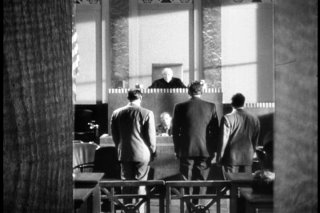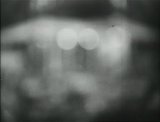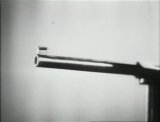My little Hitchcock marathon continues with the 1934 thriller, The Man Who Knew Too Much. This was a breakthrough international success and it was also critically acclaimed as a new high in suspense films. However, while this film exhibits much more of a mastery of technique than his previous efforts, it’s still not indicative of his later brilliance. There are many great scenes and great shots in this movie, but the plotting and pacing problems that plagued his other early films are still in evidence (although there was a big improvement). The plot has enormous holes in it, but the themes and conventions are pure Hitchcock and it’s not without a certain sense of charm.
The story concerns a married couple vacationing in the Alps with their daughter. They’re befriended by a French man who, naturally, is shot. It turns out that the man was a spy, and just before he dies, he tells the couple of a plot to assassinate an important diplomat in London. To keep the couple from talking to the police, the assassins kidnap the couple’s daughter and hold her hostage. The movie is filled with excellent scenes and shots, but the plot holes hold the film back from total brilliance. Spoilers, screenshots and more below!
The film also displays some Hitchcockian humor, something that was somewhat lacking in his previous films. For instance, there’s a clever sequence towards the beginning of the film involving a group of people on a dancefloor that get tangled up in string. Later, a scene at a dentist’s office approaches slapstick.
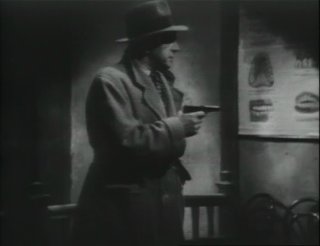
I always bring a gun to the dentist’s office.
A hilarious scene at a church approaches downright silliness as the father and his friend attempt to communicate by singing plot points to each other to the tune of the hymns (thereby disguising their conversation from their fellow churchgoers).
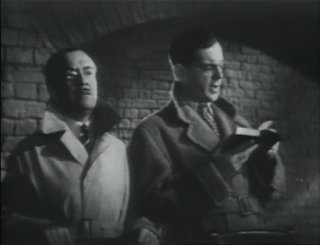
We must sing the plot now, so as not to be detected.
Later, the father’s friend gets hypnotized by the head of this (rather strange) Church. Naturally, she’s in league with the assassins.

She’s not as good as hypnotoad, but she’ll do.
Cornered by the criminals at the Church, our hero starts a… chair fight. This sequence is literally minutes long, as our hero throws chairs at the criminals, who decide not to use their guns to return fire, but to throw chairs back at the hero instead. By the way, it’s not clear in the screenshot below, but if you look closely, you can see that the man has a cigarette in his mouth. That’s right, he initiates this chair fight with a cigarette dangling from his mouth.

Chair fight!
The assassin was expertly played by Peter Lorre, in his first English speaking role. Cheerfully chewing scenery and smoking like a chimney, his presence helps give the film a large portion of its charm. A testament to how a great villain can elevate a movie…
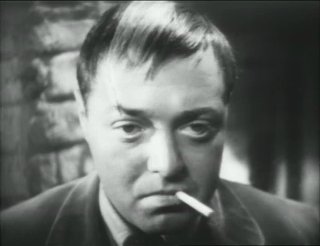
I am Peter Lorre, hear me roar.
One of the most memorable sequences in the film is when the assassins make their move on the diplomat. The shooter times his shot with a key portion of the music at a concert, and Hitchcock employs a brilliant dissolve from the orchestra to the gun (the screenshots below don’t do it justice).
Believe it or not, our heroine manages to help foil the assassination attempt, and the police are able to follow the shooter back to his group’s hideout (the aforementioned Church). This leads to a siege and eventual shootout, which was apparently based on Siege of Sidney Street, a notorious real-life gunfight in London’s East End in 1911.
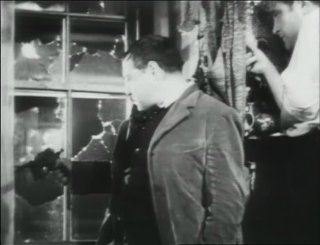
Didn’t you hear me, I am Peter Lorre! Rarr!
The film ends with the daughter escaping to the roof, chased by this pleasant fellow:
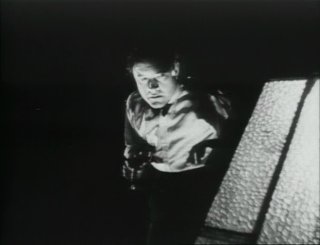
I’m nowhere near as cool as Peter Lorre.
Once again, we’ve got a film which shows flashes of Hitch’s future brilliance without being, in itself, brilliant. Still, there’s much more substance here than in the previous films in my marathon. It’s an archetype of his later work and indeed, Hitchcock remade the film nearly 20 years later (though critics disagree about which version is better).
Update: You can download the movie at the Internet Archive!
